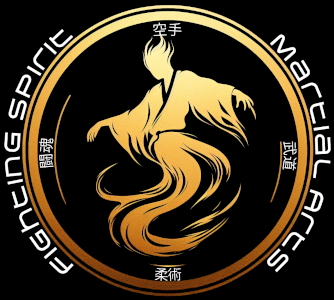
Shuri-te is one of the three major styles of traditional Okinawan karate, along with Naha-te and Tomari-te. It was developed in the early 20th century in Shuri, the former capital city of the Ryukyu Kingdom (now Okinawa, Japan). The style was heavily influenced by Chinese martial arts, which were introduced to the Ryukyu Kingdom through trade and cultural exchange. Shuri-te is known for its fast and fluid movements, dynamic kicks, and linear and circular techniques.
Origins and Development of Shuri-te
The development of Shuri-te can be traced back to two important figures in Okinawan martial arts history: Matsumura Sokon and Sakukawa Kanga.
Matsumura Sokon (1809-1899), also known as “Bushi” Matsumura, was a legendary martial artist and bodyguard of the Okinawan king. He is credited with developing many of the techniques that later became the foundation of Shuri-te. Matsumura trained in the traditional Okinawan martial arts of te and also studied Chinese martial arts during his travels to China. He blended the two styles to create a unique fighting system that emphasized balance, speed, and agility. Matsumura was also a skilled swordsman and is said to have developed the kata (patterns) Seisan and Gojushiho.
Sakukawa Kanga (1782-1838) was another important figure in the development of Shuri-te. He was one of the first Okinawan martial artists to travel to China to study martial arts, specifically Fujian White Crane. He combined his knowledge of Chinese martial arts with his existing knowledge of Okinawan te to create a new style of martial arts that would later become known as Sakugawa Koshiki Shorinji Ryu. Sakukawa taught his style to many students, including Matsumura Sokon.

Matsumura and Sakukawa’s teachings were later combined by their students and successors to create what we now know as Shuri-te. Some of the prominent figures who contributed to the development of Shuri-te include Itosu Ankō, Chibana Chōshin, and Miyagi Chōjun.
Historical and Current Link between Shuri-te and Chito-Ryu Karate
Dr. Tsuyoshi Chitose (1898-1984) is the founder of Chito-Ryu Karate, a style that is deeply rooted in Shuri-te. Chitose was born in Naha, Okinawa, and began studying karate under the tutelage of his uncle, Aragaki Tsuji, who was a direct student of Matsumura Sokon. Chitose continued his training under other prominent Shuri-te masters, including Chojun Miyagi, the founder of Goju-Ryu Karate.
In the 1940s, Chitose developed his own style of karate, which he named Chito-Ryu in honour of his two main teachers, Chibana Chōshin and Higaonna Kanryō (founder of Naha-te). Chitose incorporated elements of Shuri-te, Naha-te, and Tomari-te into his style, but his training in Shuri-te was particularly influential in shaping Chito-Ryu Karate’s techniques and principles.
Today, Chito-Ryu Karate is practiced by thousands of students around the world and is known for its strong emphasis on technique and practical self-defence. Chito-Ryu practitioners continue to honour the teachings of Matsumura Sokon and other Shuri-te masters by preserving and passing down their techniques and principles.
Conclusion
Shuri-te is an important style of traditional Okinawan karate that was developed through the blending of Okinawan and Chinese martial arts. Its development was greatly influenced by the teachings of Matsumura Sokon and Sakukawa Kanga, who are revered as pioneers of Okinawan martial arts.
The link between Shuri-te and Chito-Ryu Karate is a testament to the importance of preserving the history and traditions of martial arts. Dr. Tsuyoshi Chitose’s deep roots in Shuri-te, combined with his training in other Okinawan styles, led him to create a style of karate that reflects the rich cultural heritage of Okinawa.
Today, Shuri-te and Chito-Ryu Karate continues to be practiced by many martial artists around the world. The influence of these styles can be seen in the techniques and principles of many other karate styles and martial arts. By honouring the teachings of the past, practitioners of Shuri-te and Chito-Ryu Karate ensure that the legacy of Okinawan martial arts will continue to thrive and evolve for generations to come.
Sources:
- Bishop, M. (2015). Okinawan Karate: Teachers, Styles and Secret Techniques. Tuttle Publishing.
- McCarthy, P. (1999). The Bible of Karate: Bubishi. Tuttle Publishing.
- Chito-Ryu Karate-Do Official Website: http://www.chitoryu.com/
